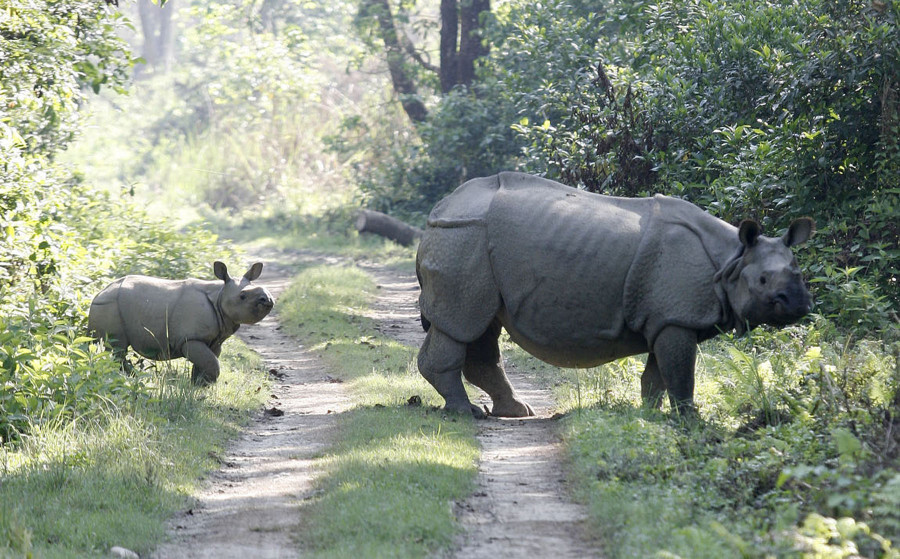Climate & Environment
Chitwan National Park improves, restores animal habitats
Habitat degradation had long been a concern for the park, which has seen a rise in rhino deaths in recent years.
Chandan Kumar Mandal
The Chitwan National Park has extensively worked on habitat management and restoration by improving hundreds of hectares of habitat areas for its wildlife.
According to Ananath Baral, chief conservation officer of Chitwan National Park, nearly 3,000 hectares of the park area has been improved as part of a habitat management initiative in the current fiscal year 2020-21.
“In terms of area, this is a significant size of habitat management we have achieved this fiscal year. Habitat management work is still ongoing,” said Baral. “The park authorities have improved the existing habitats as well as created new habitats for the wildlife.”
Of the nearly 3,000 hectares where habitat management work was carried out this fiscal year, about 2,500-2,600 hectares constituted new areas.
“This is the largest area covered as part of habitat management in one fiscal year,” said Baral. “We have used both machine-driven and manual approaches for habitat management. For cutting grass and uprooting trees, we used tractors and excavators. Human resources were used where vehicles could not reach.”
Trees were felled or uprooted for creating new habitats, requiring more effort. For improving the existing habitat, grassland areas were cleared and invasive plants were plucked out.
Chitwan National Park has long been battling the proliferation of invasive plant species, particularly mikania (Parthenium hysterophorus).
According to the park authorities, they succeeded in managing such a large area of habitat because they employed machinery for the job, making the whole process a lot quicker and cheaper than using human resources.
“We opted for the mechanised process when calling a tender for habitat management. In the past, we used to do most of the work manually. We calculated that deploying human resources was four to five times more expensive than using equipment,” said Baral. “To manage one hectare, it would cost around Rs11,000-Rs12,000 with the use of machines. The cost could go up to Rs 55,000 to Rs 60,000 had we decided to undertake the task manually.”
He said even contractors preferred using equipment to save cost and time.
The government had allocated nearly Rs35 million to create new habitats and an additional Rs10 million for restoration of existing habitat inside the park, which is home to one-horned rhinos, elephants, tigers, and other valuable wildlife species.
“The budget was more or less the same. We used it effectively and in a realistic manner so that we could achieve more,” said Baral.
Habitat management and restoration is among some of the most effective strategies for wildlife conservation.
There were concerns over degrading wildlife habitats inside Chitwan National Park, which in recent years had been witnessing a growing number of rhino deaths.
Drying water resources, shrinking grasslands and invasive plants were linked to an alarming number of deaths of the greater one-horned rhinos inside the park.
Wildlife experts had long been suggesting habitat improvement and building waterholes inside the park to minimise clashes among rhinos and crowding of animals in one particular area of the park.
The park authorities have prioritised grassland management and building waterholes in recent years.
Besides creating new grasslands and improving the existing ones, the park has also restored 35 old ponds, and constructed 12 new ponds and three tube wells.
“Wild animals should be able to get all their basic needs—food, water and space or shelter—fulfilled from their habitats. In lack of any of these, they cannot survive there,” said Baral. “We focussed not only on managing the grasslands but also on improving the overall habitat, including wetlands which ensure water availability.”
The park aims to continue the habitat management drive even in the upcoming fiscal year.
“Habitat improvement should be continued for protecting our wild animals,” said Baral, the chief conservation officer at the park. “If we are able to improve the grasslands twice a year, then the animals will have enough food.”




 7.73°C Kathmandu
7.73°C Kathmandu










